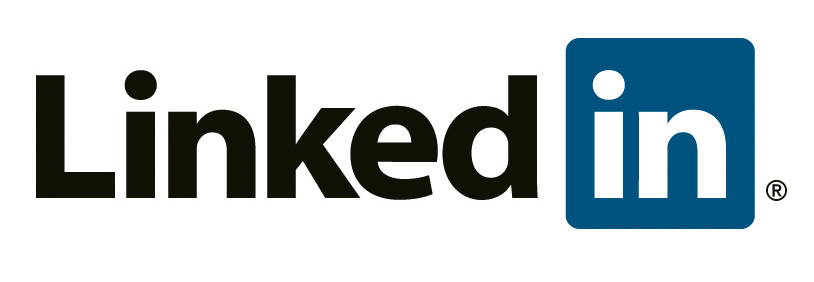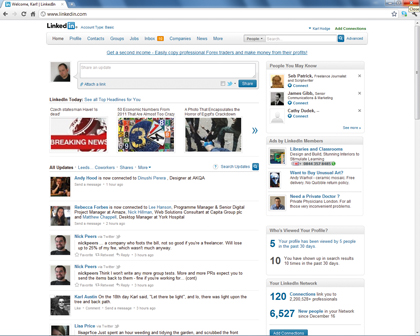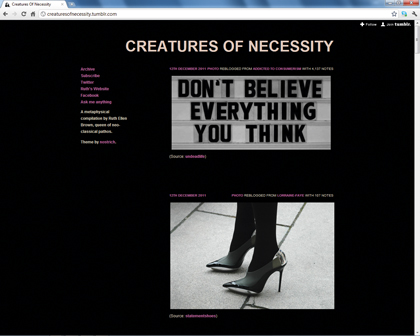
While Facebook, Twitter and Google+ are the internet's party venues, LinkedIn is the office.
The sober, clean layout, largely unchanged for the best part of a decade, tells you everything you need to know. Business is LinkedIn's business. With 120 million users, no other work-centred social network comes close.
Can it really help you get work? Like many services, it depends on how you use it. LinkedIn has three real purposes.
The first is consolidating contacts. This is the primary use. While other networks have friends or followers, LinkedIn has 'connections'. These are, in general, people you know - people you've worked with and who are useful contacts for your book. As many jobs are filled by word of mouth, it's useful to keep in touch with existing or old colleagues.
LinkedIn is also good for making new contacts - that's its secondary purpose in our book. As in the real world though, you need to follow the etiquette of business.
A mistake that rookie users often make is to blindly request LinkedIn connections that look useful to them. The system is actually built to discourage this, yet some users abuse the filters and checks designed to stop people you don't know contacting you. Don't be one of those people if you want to get the best from the site.
Another error is to treat LinkedIn like a mailing list, spamming followers with all your activities. Neither approach will win friends or influence people positively. Instead, use the networking tools that LinkedIn provides.
Sign up for breaking news, reviews, opinion, top tech deals, and more.

LinkedIn's groups are a great place to build relationships and demonstrate your expertise. Join in discussion naturally and actively. Use the site's 'Answers' application too. Before Quora and Formspring, this was the place to publicise knowledge smarts to a community of potential employers.
The third way to use LinkedIn is as a replacement for the old-fashioned curriculum vitae. It has all the same components, with space to talk about your work experience, academic achievements and job skills.
'Recommendations' are, effectively, a type of instant reference. Your LinkedIn profile is nothing without them, so call in a few favours and request some.
When your profile is looking complete - and LinkedIn will prompt you to fill in every bit - you can begin using it as part of your personal branding. Get the short version of your LinkedIn URL and put it in your email signature, on business cards and on your blog.
Connecting to LinkedIn
To get LinkedIn working for you, it needs to talk to your other networking services
1. WordPress

Connecting a WordPress-powered blog to LinkedIn enables you to drive traffic to your external site and, hopefully, get potential employers to get more detail than LinkedIn can provide. Choose 'Add application' on the right. You can easily filter what is and isn't posted.
2. Twitter

LinkedIn now asks for your Twitter address in your main profile and enables you to Tweet directly from the site. Is this wise? It depends on how you manage your presence online. If your Twitter account is optimised for the consumption of professional colleagues, do it.
3. Instant CV

When you've fully and comprehensively filled out your LinkedIn profile, you can print it out or convert it to a PDF. LinkedIn strips out all extraneous information and navigation to leave just the important parts of your profile. It gives you an instant and cleanly formatted CV.
Six networks to watch
The big four have newcomers nipping at their heels. We look at six services with something to prove
Diaspora

When Google+ rolled out, the emphasis seemed to be on privacy. Then two things happened.
First, people began using it to blog publicly, using Circles to amass users rather than block or filter. Then Google did what it always does: integrate everything. It began sharing data from Google+ with other apps, to the annoyance of privacy advocates.
This is where Diaspora comes in. It's a closed, distributed network, hosted across a variety of user machines rather than in one central location. You can join, or set up a 'pod' or node. The network allows the use of pseudonyms rather than real names.
Google+ notoriously enforces its real names policy to the extent that users better known by nicknames have been removed or forced to use their birth names.

Though other photo services and sites have social features built in, only Instagram seems to have hit the right balance. Though based online - and with an open API that has spawned a slew of third-party sites - the official service is best accessed using the official channel: an iOS app.
This tool combines three elements: the iPhone's high-res camera, a series of built-in filters that can make any mobile snap look like a vintage photo, and the ability to instantly share images with friends who also use Instagram.
The simple interface has more in common with photo-blogging services like Tumblr than gallery tools like Flickr or Picasa. Instagram has achieved phenomenal success on just iOS with over 10 million users. An Android version is currently in development.
Disqus

For users, Disqus looks like most registration-based commenting systems. The difference is, you only need to sign up once. The next time you find a site with the service enabled, you're ready to comment.
As users rapidly discover, every comment you make is archived and accessible through www.disqus.com. That builds a record of your interaction with blogs. Other Disqus users can favourite comments or follow you - just like Twitter or Google+.
We'd like to think that Disqus encourages a more measured approach to commenting - a happy medium between the anarchy of anonymous contribution and the privacy-invading use of Facebook for comments. It's been adopted by several high profile sites a a result, from The Telegraph to CNN.
Quora

In the digital economy, knowledge is currency - and Quora's the place to spend it. Members post questions in categories for other users to answer. The best answers are voted up by the original poster and the community of users. The return you get is that most valuable of virtual commodities: a good reputation.
Quora is partly about opinion. Like the comments section of blogs, it lets anyone speak their mind. Overlaying a system of selection makes that opinion valuable to other users.
In common with Wikipedia, Quora harnesses the wisdom of crowds, and much like the online encyclopedia, it does it in two stages, with contributors and editors. In Wikipedia's case, editors are hands-on, able to get in there and alter content. With Quora, the mechanic is more simple: they edit with a simple thumbs up.
Glitch

Glitch is a 2D, massively multiplayer platform and world building game. It has also has all the components you look for in social media.
There are profiles, internal mail and chat systems. You can add friends to a list and create chat groups. The fact that all this takes place within a game is both incidental and integral.
The most successful games on Facebook leverage the interaction that takes place between people. The same observation can be extended to MMPORGs like World of Warcraft. Make no mistake, these are social networks, where getting ahead requires making connections and gathering friends.
The same tools that enable this teamwork also allow casual conversation. Like the MUDs of old, Glitch hosts gatherings and parties, where users log on not to play, but just to hang out and chat.
Tumblr

Tumblr is the original, long form re-sharing platform, with tools that let you follow friends and be followed. You can post photos, text and video on Tumblr, with the majority of content being clipped and shared from other sites.
The site was launched around the same time as Twitter and predates Google+, but the mechanics are similar. So why isn't it as well known and mainstream?
With 34 million users, it has fewer regular users than either service. We think the answer comes down to demographics. While Twitter is loved by media types and Google+ is the place for tech-savvy early adopters, Tumblr has a very youthful, teenage vibe.
That doesn't mean you should write it off. It's great for photo blogging and posting images, and recommend anyone who's less wordy and more visual to give it a try.